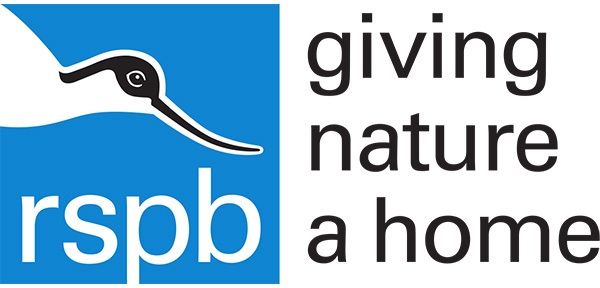Helping new ideas to take flight
A longstanding customer of Esri UK, the RSPB engaged one of Esri UK’s Embedded Product Specialists to help leverage more business value from its use of Esri’s ArcGIS and put new ideas into action. Now, the charity is equipped with a suite of innovative apps, as well as the skills and knowledge to develop new GIS solutions in-house, to support the charity’s critical conservation work.
Enhanced in-house GIS skills and knowledge
Accelerated project delivery
A strong basis for ongoing GIS innovation
The Challenge
The Royal Society for the Protection of Birds (RSPB) is the country’s largest nature conservation charity, inspiring everyone ‘to give nature a home’. As a registered charity, it has a responsibility to its supporters to ensure that every donation it receives is wisely invested and fully optimised so that the organisation can help protect wildlife and the places where it lives.
For many years, the RSPB has used geographic information system (GIS) technology from Esri UK to help it map and understand complex factors, ranging from migration patterns to diminishing natural landscapes. The organisation has full access to ArcGIS, through its license agreement, but realised that it wasn’t exploiting all of the advanced capabilities. It was keen to explore how it might make more optimal use of ArcGIS to create public-facing education resources, improve the efficiency of surveys in the field and raise the profile of key campaigns.
Having a specialist from Esri UK as a part of our team helped us realise what is possible with the latest ArcGIS technology. We are now making far greater use of ArcGIS to support our conservation, education and fundraising activities
Adrian Hughes – Head of GIS Technical Services, the RSPB
The Solution
To meet these aspirations, the RSPB engaged a highly skilled Embedded Product Specialist (EPS) from Esri UK. As an expert in ArcGIS , the EPS was able to quickly set up ArcGIS Online for the RSPB and start not only designing, but also delivering a range of GIS apps and solutions. Embedded with, and managed by, RSPB staff, she became a highly valued member of the organisation’s GIS team for three days a week, over a twelve week period.
The EPS worked on a range of specific projects including:
- The authoring of StoryMaps to showcase RSPB projects, particularly the adventures of Lazaros the Egyptian Vulture (map) and a Turtle Dove tracking exercise (map)
- The deployment of Collector for ArcGIS and Survey123 for ArcGIS for bird monitoring and habitat mapping in the field using smartphones
- The creation of an ‘ArcGIS Workspace’ on the RSPB’s internal portal, populated with best practice documentation and resources
- The delivery of training courses, lunch-time knowledge-transfer sessions and other initiatives to improve the skills of the RSPB’s in-house team
- Recommendations for how to further extend the use of ArcGIS and innovate with GIS
With the hands-on involvement of Esri UK’s specialist, we delivered this mobile survey solution in half the time that we might otherwise have needed to develop it in house
Adrian Hughes – Head of GIS Technical Services at the RSPB
Benefits
The RSPB gained significant value from its appointment of an EPS. The long-term benefits include:
Greater return on GIS investment
With the support and guidance of the EPS, the RSPB is now gaining an enhanced return from its existing investment in ArcGIS. “GIS is a very fast-moving field,” says Adrian Hughes, Head of GIS Technical Services at the RSPB. “Having a specialist from Esri UK as a part of our team helped us realise what is possible with the latest ArcGIS technology. We are now making far greater use of ArcGIS to support our conservation, education and fundraising activities.”
Enhanced in-house skills and knowledge
Critically, the EPS brought up-to-date skills and knowledge to the RSPB and passed them on to members of staff, boosting their own competencies. She delivered a range of training courses, as well as focussed one-to-one, webinar and lunchtime sessions to help RSPB staff learn about, and put into practice, the latest capabilities of ArcGIS. She also led best practice and ‘tips and tricks’ discussions and created invaluable learning materials for the RSPB’s ‘ArcGIS Workspace’.
Accelerated project delivery
In one project, the EPS used Collector for ArcGIS and Survey123 for ArcGIS – two tools that are included within the ArcGIS – to create a mobile survey solution for the RSPB. The app is now being used by volunteers to collect data about an endangered seabird, the Little Tern, in the field on smartphones. “With the hands-on involvement of Esri UK’s specialist, we delivered this mobile survey solution in half the time that we might otherwise have needed to develop it in house,” Hughes says.
Improved citizen engagement
In another initiative, the EPS developed Story Maps to make RSPB data engaging for members of the public. For instance, the Story Map about Lazaros the Egyptian Vulture reached over 40,000 people via the RSPB’s social media channels and prompted positive responses from RSPB followers. Hughes notes, “The specialist showed us how quickly we can create captivating content to help engage the public and convey the urgency and importance of our conservation work.”
A platform for innovation in conservation
Particularly in the areas of web and mobile GIS, the EPS inspired the RSPB team to innovate. For instance, the EPS helped to test a drone-to-map solution that will, in the future, enable the RSPB to collect vital habitat data more cost effectively. Summing up, Hughes says, “Without doubt, our appointment of an EPS has helped us realise just how much we can do with GIS to support the vital work of the RSPB now and in the future.”



